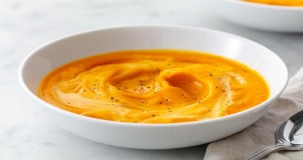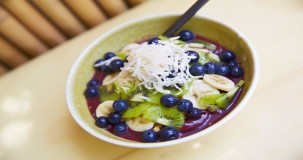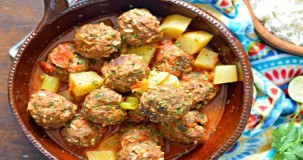 Lifestyle
Lifestyle
 Blogs
Blogs
 Blogs
Blogs
 Blogs
Blogs
 Baby
Baby
 Baby
Baby
 Baby
Baby
 Baby
Baby
 Lifestyle
Lifestyle
Do you take the leaves off broccoli rabe before cooking? Yes, it is recommended to remove the leaves from broccoli rabe before cooking. This ensures a tender texture and minimizes any bitterness in the dish.
Broccoli Rabe: An Introduction
Broccoli rabe, also known as rapini, is a leafy green vegetable that is closely related to turnips and mustard greens. It is a popular ingredient in Italian cuisine, known for its slightly bitter taste and versatility. Broccoli rabe is commonly used in various dishes, including pasta, stir-fries, and soups.
To Remove or Not to Remove: The Leaves Debate
When it comes to cooking broccoli rabe, the decision to remove or keep the leaves largely depends on personal preference. Some individuals prefer to remove the leaves, while others choose to include them in the dish. Here are a few considerations to help you decide.
Nutritional Content
Broccoli rabe leaves contain valuable nutrients, including vitamins A, C, and K, as well as calcium, iron, and potassium. Therefore, if you decide to keep the leaves, you will benefit from an increased nutritional content in your dish.
Texture and Bitterness
One of the main reasons people choose to remove the leaves from broccoli rabe is their texture and bitterness. Broccoli rabe leaves can be slightly tough and have a bitter taste. If you prefer a milder flavor and a softer texture, removing the leaves might be a good idea.
Cooking Techniques
The cooking technique you are planning to use also influences the decision to remove or keep the leaves. If you are planning to blanch or steam the broccoli rabe, it is recommended to keep the leaves intact, as they will provide additional volume and substance to your dish.
On the other hand, if you are sautéing or stir-frying the broccoli rabe, removing the leaves can help ensure a better texture and avoid any unpleasant bitterness.
Cultural and Regional Preferences
Broccoli rabe is a staple in Italian cuisine, where it is often cooked with the leaves included. The bitterness of the leaves is considered a desirable flavor component in many traditional Italian recipes. However, in other culinary traditions, such as some Asian cuisines, removing the leaves may be more common.
Expert Recommendations
Experts in the culinary field generally recommend removing the leaves from broccoli rabe before cooking. This is because the leaves can be tough and bitter, which may not provide the desired taste and texture in certain dishes.
However, it is important to note that removing the leaves is not mandatory, and it ultimately comes down to personal preference and the specific recipe you are following.
Conclusion
In conclusion, whether you choose to remove the leaves from broccoli rabe before cooking or not is a personal decision. Considering factors such as nutritional content, texture, and cooking techniques can help guide your choice. Ultimately, experimenting and finding what works best for your taste preferences is the key to enjoying this versatile and nutritious vegetable.
No, you do not have to remove the leaves. In fact, the leaves are edible and have a slightly bitter taste, which can add flavor to your dish.
2. Can I cook broccoli rabe with the leaves on?Absolutely! Cooking broccoli rabe with the leaves on is perfectly fine. The leaves can be sautéed, boiled, or steamed just like the stems.
3. Do the leaves of broccoli rabe need any special preparation before cooking?There is no special preparation needed for the leaves. Simply wash them thoroughly before cooking, just as you would with the stems.
4. Will the leaves become tender when cooked?Yes, the leaves of broccoli rabe will become tender when cooked. However, they may retain a slightly chewy texture compared to the stems.
5. Can I use the leaves from broccoli rabe in other recipes?Yes, the leaves from broccoli rabe can be used in various recipes. They can be added to salads, stir-fries, or even used as a garnish for soups and stews.
 LATEST ARTICLES
LATEST ARTICLES

Am I a Millennial or Gen Z?

Am I bloated or fat?

Am I dehydrated or sick?

Are babies born with ADHD?

Are babies born geniuses?

Are babies born in September smarter?

Are babies actually talking when they babble?

What are 3 signs of a toxic relationship?

What are 10 signs of a toxic relationship?

Am I in a toxic relationship?

How do you find red flags in a toxic relationship?

Am I bloated or pregnant?

Am I bloated or showing at 9 weeks?

Am I bloated or showing at 10 weeks?

Am I bloated or showing at 7 weeks?

Are acai bowls just smoothies?

Are all pumpkins good for soup?

Are acai bowls healthy or unhealthy?

Are air fried potatoes healthy?

Are albondigas the same as meatballs?

Am I being Gaslit or am I the gaslighter?

Am I bloated or did I gain weight?

Am I allergic to vodka?
 POPULAR ARTICLES
POPULAR ARTICLES

Am I a Millennial or Gen Z?

Am I bloated or fat?

Am I dehydrated or sick?

Are babies born with ADHD?

Are babies born geniuses?

Are babies born in September smarter?

Are babies actually talking when they babble?

What are 3 signs of a toxic relationship?

What are 10 signs of a toxic relationship?

Am I in a toxic relationship?